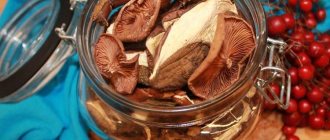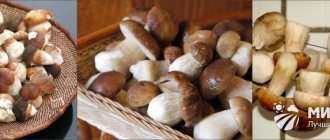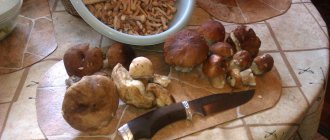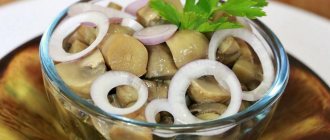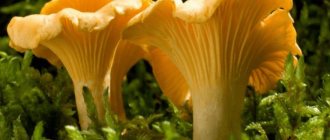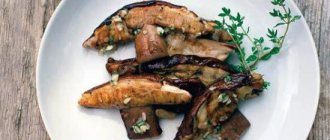- 5 - 9 grades
- Russian language
- 9 points
Check your spelling and write down phrases with participles and adjectives in two columns. A skilled worker, a mad dog, a job done, a crane's cry, the only evidence, leather gloves, window frames, fried fish, dried mushrooms, a smart guy, a soldier wounded in battle, an uninvited guest, days worked, sun-dried apples, plowed fields . Thank you in advance)
- Ask for more explanation
- Track
- Flag violation
Lyuba99 09.11.2012
Answer
Expert tested
completed fish fried in a frying pan in battle , spent apples dried in the sun completely plowed.
Two NN are written (see highlighted: if there is a prefix or dependent words)
skilled worker, mad dog, dried mushrooms, smart guy, uninvited guest, crane cry, the only evidence, leather gloves, window frames
Drying mushrooms
Drying is one of the simplest and most accessible ways to harvest mushrooms. Dried mushrooms keep well for a long time. In terms of nutritional value and digestibility, they are superior to salted and pickled mushrooms. In terms of protein content, dried mushrooms are superior to canned ones. When dried, all the nutritional benefits of mushrooms are preserved; The aroma of some species is even enhanced by this method of preparation, as, for example, in the porcini mushroom.
However, not all edible mushrooms can be dried. Many agaric mushrooms contain bitterness, which does not disappear during the drying process. Such mushrooms are not suitable for drying.
The following types of mushrooms should be dried at home:
- from tubular mushrooms - porcini mushrooms, aspen boletuses, boletus mushrooms, all types of boletus mushrooms, moss mushrooms, goat mushrooms, oak mushrooms, Polish mushroom;
- from marsupials - morels, morel cap, white truffle;
- of tinder fungus - ram mushroom, variegated and branched tinder fungus;
- from the lamellar ones - autumn honey fungus, summer and winter honey fungus, variegated umbrella mushroom, champignons, cherry blossom, fleecy mushroom, deer mushroom;
- from chanterelles - common chanterelle.
You can dry mushrooms in the open air (in the sun), in a Russian oven (or simply an oven), in an oven, over a gas or electric stove, on exotic heating devices - a primus or kerosene stove, using modern microwave ovens, on central heating radiators and etc.
Air drying of mushrooms is possible only in hot, dry times, on clear sunny days. In cloudy, damp weather, you cannot dry mushrooms in the open air, as they can spoil and there is nothing for them to dry. Natural drying of mushrooms in the sun lasts about a week. Mushrooms are strung on strong, harsh threads, thin twine or fishing line and hung in sunny places so that they do not touch. You can make special stands for this, place mushrooms strung on threads or metal rods on them and expose them to the sun, covering them with gauze from dust and flies.
Read also: How to attach a canopy to a suspended ceiling
The most reliable methods should be considered drying in a Russian oven, drying mushrooms in an oven or over a stove (gas or electric).
Fresh, strong, healthy mushrooms that are not damaged by worms are selected for drying.
Cleaned mushrooms are wiped with a clean, slightly moistened soft cloth (preferably nylon), clearing them of needles, leaves, moss, sand, soil and sorted by size. To speed up the drying process, it is better to cut large mushroom caps into slices, cutting off the stem at a distance from the cap. The stems of porcini, aspen and boletus mushrooms are cut into long columns or wheels up to 2 cm thick. For butter mushrooms, moss mushrooms, honey mushrooms and chanterelles, mostly only the caps are used for drying, and the morels and strings are dried entirely. You should not wash mushrooms before drying, as they absorb a lot of water, dry out very slowly and can spoil.
To avoid contamination, it is better to dry mushrooms on special devices: sieves, racks, braids, strung on a thread or on pins mounted on wooden racks or on the spokes of a mushroom dryer.
Mushrooms are considered dried if they feel dry, light to the touch, bend slightly, and break with some force. Well-dried mushrooms resemble fresh ones in taste and aroma. The “yield” of dry mushrooms averages 10–14% by weight of raw peeled mushrooms. Thus, from 10 kg of fresh mushrooms, only dried mushrooms are obtained.
Dried mushrooms, and the small caps dry out first, must be removed periodically in a timely manner, and the remaining ones must be dried to the desired condition. You should not overdry mushrooms, as they become tasteless and lose their flavor; they do not soften or boil when cooked. At the same time, under-dried mushrooms are poorly stored, begin to mold at the slightest dampness and quickly deteriorate.
In a Russian oven you can dry all tubular and lamellar mushrooms and tinder fungi. You can't dry it in the oven.
How to properly dry mushrooms
Ecology of consumption. Life hack: Let's look at ways to dry mushrooms in the microwave, on a Russian oven, in the sun, in the oven, as well as a method for making mushroom powder...
Let's consider methods of drying mushrooms in the microwave, on a Russian oven, in the sun, in the oven, as well as the method of making mushroom powder.
Drying is one of the simplest and most accessible ways to harvest mushrooms. Dried mushrooms keep well for a long time. In terms of nutritional value and digestibility, they are superior to salted and pickled mushrooms.
In terms of protein content, dried mushrooms are superior to canned ones. When dried, all the nutritional benefits of mushrooms are preserved; The aroma of some species is even enhanced by this method of preparation, as, for example, in the porcini mushroom.
However, not all edible mushrooms can be dried. Many agaric mushrooms contain bitterness, which does not disappear during the drying process. Such mushrooms are not suitable for drying.
The following types of mushrooms should be dried at home:
- from tubular mushrooms - porcini mushrooms, aspen boletuses, boletus mushrooms, all types of boletus mushrooms, moss mushrooms, goat mushrooms, oak mushrooms, Polish mushroom;
- from marsupials - morels, morel cap, white truffle;
- of tinder fungus - ram mushroom, variegated and branched tinder fungus;
- from the lamellar ones - autumn honey fungus, summer and winter honey fungus, variegated umbrella mushroom, champignons, cherry blossom, fleecy mushroom, deer mushroom;
- from chanterelles - common chanterelle.
You can dry mushrooms:
- outdoors (in the sun),
- in a Russian oven (or simply oven),
- in the oven,
- over a gas or electric stove,
- on exotic heating devices - primus or kerosene stove,
- using modern microwave ovens,
- on central heating radiators, etc.
Air drying of mushrooms is possible only in hot, dry times, on clear sunny days. In cloudy, damp weather, you cannot dry mushrooms in the open air, as they can spoil and there is nothing for them to dry. Natural drying of mushrooms in the sun lasts about a week. Mushrooms are strung on strong, harsh threads, thin twine or fishing line and hung in sunny places so that they do not touch. You can make special stands for this, place mushrooms strung on threads or metal rods on them and expose them to the sun, covering them with gauze from dust and flies.
The most reliable methods should be considered drying in a Russian oven, drying mushrooms in the oven or over a stove (gas or electric).
Fresh, strong, healthy mushrooms that are not damaged by worms are selected for drying.
Cleaned mushrooms are wiped with a clean, slightly moistened soft cloth (preferably nylon), clearing them of needles, leaves, moss, sand, soil and sorted by size. To speed up the drying process, it is better to cut large mushroom caps into slices, cutting off the stem at a distance of 2–3 cm from the cap. The stems of porcini, aspen and boletus mushrooms are cut into columns 3–4 cm long or wheels up to 2 cm thick. For butter mushrooms, moss mushrooms, honey mushrooms and chanterelles, mostly only the caps are used for drying, while morels and strings are dried entirely. You should not wash mushrooms before drying, as they absorb a lot of water, dry out very slowly and can spoil.
To avoid contamination, it is better to dry mushrooms on special devices: sieves, racks, braids, strung on a thread or on pins mounted on wooden racks or on the spokes of a mushroom dryer.
Mushrooms are considered dried if they feel dry, light to the touch, bend slightly, and break with some force. Well-dried mushrooms resemble fresh ones in taste and aroma. The “yield” of dry mushrooms averages 10–14% by weight of raw peeled mushrooms. Thus, from 10 kg of fresh mushrooms, only 1–1.4 kg of dried mushrooms are obtained.
Dried mushrooms, and the small caps dry out first, must be removed periodically in a timely manner, and the remaining ones must be dried to the desired condition. You should not overdry mushrooms, as they become tasteless and lose their flavor; they do not soften or boil when cooked. At the same time, under-dried mushrooms are poorly stored, begin to mold at the slightest dampness and quickly deteriorate.
In a Russian oven you can dry all tubular and lamellar mushrooms and tinder fungi. You cannot dry morels in the oven.
DRYING MUSHROOMS IN THE SUN
On hot days, mushrooms can be dried in the sun or just dried to finally dry them at a higher temperature on the stove or in the oven.
For this purpose, mushrooms are placed on drying trays, thick paper or a dry board. Under no circumstances should mushrooms be placed on an iron baking sheet, as the mushrooms may bake and turn black on it.
Drying is carried out in a place protected from rain and dust and well blown by the wind. It is very important that the mushrooms, pre-cut into slices, are dried or dried completely within no more than 1-2 days. In this case, they retain their natural color.
Properly dried mushrooms bend; overdried ones crumble - it is better to soak such mushrooms and use them in the form of mushroom powder.
DRYING MUSHROOMS IN THE OVEN
When drying in the oven, mushrooms are laid out in a thin layer on specially made or ready-made racks installed in place of regular baking sheets. The temperature in the oven should be between 60–70°C, and in order for the air to constantly circulate in it, the door should be kept ajar. As the mushrooms dry, the grates are swapped from top to bottom.
In urban conditions and for modern kitchens, this method of drying mushrooms is probably the most common and simple: ovens (and grates in them) are found in every home. If there are few grates (or there are none, sometimes), then you can independently make 2-3 grates according to the size of the oven so that they can be installed instead of baking sheets. The gratings can be made from any large-mesh wire mesh.
You can also use baking sheets if you don’t have wire racks. Mushrooms are selected by size (large ones are cut into pieces) and laid out on baking sheets. In this case, the mushrooms should not come into contact with each other, and air circulation in the oven should be ensured (open the door slightly).
First, the mushrooms are dried at a temperature of 45°C. At a higher initial temperature, protein substances are released on the surface of the mushrooms and then dry out, which worsens the further course of drying and gives the mushrooms a dark color. In this case, the mushrooms become so soft that they cannot be used as food. Only after the surface of the mushrooms has dried and they stop sticking can the temperature be raised to 75–80°C.
The duration of drying and drying of mushrooms cannot be determined accurately. If the mushroom caps and plates are the same size, they dry at the same time. Dry mushrooms are removed, and the rest are dried, turning them over from time to time.
DRYING MUSHROOMS IN THE MICROWAVE
When drying mushrooms in the microwave: peeled and chopped mushrooms are placed on a plate or wire rack, the minimum power is set to 100–180 W and left for 20 minutes, then the oven is opened and ventilated for 5–10 minutes. During this time, excess moisture intensively evaporates. Then the operation is repeated 2-3 more times. As a result, you can end up with either a finished product - dried mushrooms, or a semi-finished product for further drying, it depends on the specific mushrooms.
This method of drying mushrooms is quite troublesome. Convenient only if your microwave has a large capacity. On small cars the process is very tedious and lengthy, although quite realistic.
DRYING MUSHROOMS IN A RUSSIAN OVEN
Mushrooms prepared for drying are laid out with their caps down on racks, braids, or strung on knitting needles. Loaded devices should be placed in the oven when the temperature in it after firing drops to 60–70°C. At a higher temperature, it is not recommended to start drying, as the mushrooms can steam or fry, burn and become very black. At temperatures below 50°C they dry very slowly, turn sour and deteriorate.
Before loading mushrooms, sweep under the stove so that there is no ash left on the floor. There should be no containers containing food or water in the oven at the time of drying.
If the grates or wickerwork do not have legs, then bricks should be placed under them, placed on edge, so that the mushrooms do not come into contact with the oven floor.
During drying, it is very important to ensure that the moisture that evaporates from the mushrooms is removed. To do this, the damper should be placed on 2 bricks, leaving a gap between them for air flow from below. The upper part of the damper should not tightly close the forehead of the stove so that moist air is removed all the time.
At the beginning of drying, the stove pipe is opened by 0.75 valves, as the mushrooms dry, it is gradually pushed back and closed tightly at the end of drying. Mushrooms dry unevenly, small caps dry faster, large caps dry more slowly, so the dried ones must be removed in a timely manner, otherwise they will lose their aroma and become tasteless. Under-dried mushrooms begin to mold at the slightest dampness.
STORAGE OF DRIED MUSHROOMS, PRESERVATION OF DRIED MUSHROOMS
Dried mushrooms are very hygroscopic: they absorb moisture from the surrounding air (especially if they are prepared in the form of mushroom powder), and easily become damp and moldy. In addition, they quickly absorb foreign odors. Therefore, dried mushrooms should be stored in dry, well-ventilated areas and, best of all, in moisture-proof bags or tightly closed glass or metal jars. Dried mushrooms can also be stored in gauze or linen bags, but strictly in a well-ventilated place and separately from products with a strong odor.
If for some reason the mushrooms become wet, they should be sorted and dried.
To preserve mushrooms for a long time, it is more convenient to place the mushrooms immediately after drying (while they still retain their fragility and warmth) in hermetically sealed glass jars. Jars are sterilized at a temperature of 90°C: half-liter jars for 40 minutes, liter jars for 50 minutes.
To suck air out of cans, you can use the following method. Pour a little alcohol onto the inner surface of the lid, light it and immediately close the jar. When alcohol burns, almost all the oxygen in the jar is consumed, as a result of which the mushrooms will not become moldy, even if they were not sufficiently dried and were placed in a damp room.
Before preparing food from them, the mushrooms are washed with a brush, removing dust and dirt, and filled with water for several hours to swell, and then boiled in the same water.
It's even better to soak dried mushrooms in milk or milk and half-and-half water. Mushrooms that have turned black during drying should be rinsed well before adding to the soup so that they do not give the soup a black color. The mushroom decoction is left to settle possible sand, filtered and used to prepare soups, sauces or gravies.
MANUFACTURING MUSHROOM POWDER
Well-dried or overdried mushrooms can be chopped and ground into a fine powder in a coffee grinder. When crushed, poorly digestible films of coarse fibers are destroyed, and mushrooms in this form better reveal their taste, aroma and are more easily absorbed by the body. Dry porcini mushroom powder is especially good.
When grinding the mushroom powder, add 5–10% by weight of fine salt for preservation. You can also add ground spices to taste: allspice, cumin, dried celery and parsley leaves, etc.
Mushroom powder is very convenient for adding to food or at the very end of cooking - no more than 0.5-1 minute before the end, or for direct addition to hot and cold food - salads, soups, main courses. It is added to omelettes when beating the egg mass.
Also interesting: Growing porcini mushrooms in the country
Pickling mushrooms: 8 delicious recipes
Mushroom powder should be stored in a glass jar with a tight lid, protected from light. Shelf life with virtually no reduction in quality - up to 1 year. Published
PS And remember, just by changing your consumption, we are changing the world together! © econet
Drying mushrooms in the sun
On hot days, mushrooms can be dried in the sun or just dried to finally dry them at a higher temperature on the stove or in the oven.
For this purpose, mushrooms are placed on drying trays, thick paper or a dry board. Under no circumstances should mushrooms be placed on an iron baking sheet, as the mushrooms may bake and turn black on it.
Drying is carried out in a place protected from rain and dust and well blown by the wind. It is very important that the mushrooms, pre-cut into slices, are dried or dried completely in no more than time. In this case, they retain their natural color.
Properly dried mushrooms bend; overdried ones crumble - it is better to soak such mushrooms and use them in the form of mushroom powder.
How to dry porcini mushrooms on a string at home
This method is the most common; it takes relatively little time, about a day, to obtain blanks, which, if necessary, can be additionally dried in any other equipment.
Two preparation methods:
1. String mushrooms onto a strong thread, making small indentations from each other. The ends of the threads must be fastened together. Drying is carried out in a well-ventilated area.
To protect from insects and dust, all workpieces are covered with a piece of gauze. The pieces should not get wet. At night, all products are transferred indoors.
2. You can also lay out the records on sheets of paper or soft cloth, you can take a newspaper. The decomposed raw materials are dried in direct sunlight for at least two days. If you neglect this point, the workpieces may change color and become dark.
The total processing time for raw materials is 2-7 days.
The food is turned over approximately twice a day to ensure even drying.
Drying mushrooms in the oven
When drying in the oven, mushrooms are laid out in a thin layer on specially made or ready-made racks installed in place of regular baking sheets. The temperature in the oven should be between 60–70°C, and in order for the air to constantly circulate in it, the door should be kept ajar. As the mushrooms dry, the grates are swapped from top to bottom.
In urban conditions and for modern kitchens, this method of drying mushrooms is probably the most common and simple: ovens (and grates in them) are found in every home. If there are few grates (or there are none, sometimes), then you can independently make grates according to the size of the oven so that they can be installed instead of baking sheets. The gratings can be made from any large-mesh wire mesh.
You can also use baking sheets if you don’t have wire racks. Mushrooms are selected by size (large ones are cut into pieces) and laid out on baking sheets. In this case, the mushrooms should not come into contact with each other, and air circulation in the oven should be ensured (open the door slightly).
Read also How to fry bluelegs mushrooms with onions
First, the mushrooms are dried at a temperature of 45°C. At a higher initial temperature, protein substances are released on the surface of the mushrooms and then dry out, which worsens the further course of drying and gives the mushrooms a dark color. In this case, the mushrooms become so soft that they cannot be used as food. Only after the surface of the mushrooms has dried and they stop sticking can the temperature be raised to 75–80°C.
The duration of drying and drying of mushrooms cannot be determined accurately. If the mushroom caps and plates are the same size, they dry at the same time. Dry mushrooms are removed, and the rest are dried, turning them over from time to time.
What mushrooms can be dried?
In order not to harm the health of your loved ones, you need to remember all the types of forest products that can be taken for such purposes.
1. From the group of tubular mushrooms, boletus, porcini mushrooms, boletus mushrooms, oak mushrooms, moss mushrooms, goat mushrooms, and also Polish mushrooms are suitable.
2. It is recommended to process marsupial morels using the natural method. It is best to do this outdoors, by hanging the product in canvas and gauze bags for 4-5 months.
After this time, the product is freed from toxins. Only after this stage is it suitable for food, since the risk of poisoning by harmful substances is reduced.
3. Lamellar mushrooms are also suitable for preparations, namely: saffron milk caps collected at different times of the year, variegated umbrella mushrooms, sorrel mushrooms, deer mushrooms, and champignons.
4. Chanterelles are also suitable for similar procedures. This type is the only one that can be processed in this way. Other ingredients may be a little bitter in many recipes.
Drying mushrooms in the microwave
When drying mushrooms in the microwave: peeled and chopped mushrooms are placed on a plate or wire rack, the minimum power is set and left for 20 minutes, then the oven is opened and ventilated for minutes. During this time, excess moisture intensively evaporates. Then the operation is repeated again. As a result, you can get either a finished product - dried mushrooms or a semi-finished product for further drying, it depends on the specific mushrooms.
This method of drying mushrooms is quite troublesome. Convenient only if your microwave has a large capacity. On small cars the process is very tedious and lengthy, although quite realistic.
How to cook mushroom soup from dried mushrooms?
mushroom soup from dried mushrooms
Cooking soup from dried mushrooms is quite simple and does not require special knowledge and skills. Let's look at how to cook dried mushroom soup step by step:
- First of all, prepare all the necessary ingredients for making mushroom soup: dried mushrooms (30-50 grams, which is equivalent to 300 grams of fresh ones), potatoes (2-3 pieces), carrots (1 medium), 1 onion, salt, pepper, herbs (parsley ).
- First of all, soak the dried mushrooms, then cook in a saucepan for an average of 30 minutes until tender.
- We take out the cooked mushrooms and additionally cut them into small pieces (if they become large after cooking).
- In a heated frying pan in vegetable oil, fry the chopped onion until golden brown, add the grated carrots and after a few minutes chopped boiled mushrooms, after which everything is fried together for an average of 5-7 minutes.
- Place the roast in a pan of boiling water, add salt to taste, then add the potatoes cut into pieces and cook for 10 minutes.
- Leave the pan with the cooked mushroom soup off the heat and let it sit for 10-15 minutes before serving.
In conclusion , it can be noted that knowing how to prepare dried mushrooms (how to boil them), you can easily cook delicious and aromatic mushroom soup or boil wild mushrooms dried for the winter to prepare your favorite dishes. We leave our reviews and useful tips on how and how long to cook dried mushrooms in the comments to the article and share it on social networks if it was useful to you.
Drying mushrooms in a Russian oven
Mushrooms prepared for drying are laid out with their caps down on racks, braids, or strung on knitting needles. Loaded devices should be placed in the oven when the temperature in it after firing drops to 60–70°C. At a higher temperature, it is not recommended to start drying, as the mushrooms can steam or fry, burn and become very black. At temperatures below 50°C they dry very slowly, turn sour and deteriorate.
Before loading the mushrooms under the stove, you need to sweep it so that there is no ash left on it. There should be no containers containing food or water in the oven at the time of drying.
If the grates or wickerwork do not have legs, then bricks should be placed under them, placed on edge, so that the mushrooms do not come into contact with the oven floor.
During drying, it is very important to ensure that the moisture that evaporates from the mushrooms is removed. To do this, the damper should be placed on 2 bricks, leaving a gap between them for air flow from below. The upper part of the damper should not tightly close the forehead of the stove so that moist air is removed all the time.
At the beginning of drying, the stove pipe is opened by 0.75 valves, as the mushrooms dry, it is gradually pushed back and closed tightly at the end of drying. Mushrooms dry unevenly, small caps dry faster, large caps dry more slowly, so the dried ones must be removed in a timely manner, otherwise they will lose their aroma and become tasteless. Under-dried mushrooms begin to mold at the slightest dampness.
The West has assessed all the consequences of living in a quarrel with Russia
MOSCOW, March 1 - PRIME, Andrey Karabyants. The well-known consulting company Wood Mackenzie made a report on the consequences for Europe of the sanctions that Western countries, led by the United States, imposed against Russia. According to the report, Russia is now in a better economic position compared to 2014, when reunification with Crimea took place, and is therefore able to withstand sanctions from a united West. But if energy supplies from Russia stop - and such a scenario cannot be ruled out, although both sides do not want this - the impact on the world market will be extremely negative.
Shot in the head: what will happen to those who touch Russia's gold reserves
Russia has created a financial cushion that can soften the blow from Western sanctions in the near future. Due to the restrictions, Russia will lose access to the international capital market, so new government borrowing must come from internal reserves. The accumulated reserves allow Russia to fully fulfill its financial obligations on government debt until 2025.
GAS
Europe, in turn, remains hugely dependent on energy imports from Russia—primarily gas supplies.
A special operation to denazify Ukraine threatens to collapse the European gas market, which is already experiencing the worst energy crisis in history. Pipeline gas supplies from Russia alone account for 38% of EU demand, WoodMac estimates, making sanctions against Russian energy supplies impossible. If the EU refuses to supply Russian gas, the long-term consequences for the whole of Europe will be very harmful.
For Russia, the losses will also be great. According to experts from the consulting company, at current prices, revenue from Russian gas exports exceeds $7.5 billion per month. Both Russia and the EU will suffer seriously from the breakdown of relations in the gas sector. But Wood Mackenzie hopes that the parties will be able to find a way out of this situation if they adhere to a pragmatic approach to conducting economic relations.
This is too much. Sanctions that the West will never dare to take
Europe's dependence on Russian gas imports remains despite the growth of supplies from alternative sources: LNG from the USA and Qatar, pipeline gas from Azerbaijan and Norway.
The crisis is forcing the EU to reconsider the role of gas in the decarbonization process (reducing carbon emissions) by increasing the share of renewable energy sources (RES), bio-methane and green hydrogen.
OIL
According to Wood Mackenzie, oil exports from Russia currently amount to 4.6 million barrels per day. Of this volume, 2.3 million barrels per day. delivered to the west. The US administration has made it clear that it does not intend to introduce sanctions that would imply a ban on the purchase of Russian oil. Experts at the consulting company expect a decrease in purchases of Russian oil from Western countries and a reduction in supply on the oil market until the situation with payments for supplies becomes clearer.
In the event of a reduction in supply from Russia, Saudi Arabia and other countries, including those included in the OPEC+ agreement, they will have to use all the free production capacity that is at their disposal. Increased production and supply from these countries will slow down price growth in the near term. However, it is not expected that importing countries will refuse Russian oil, which will flow onto the free market.
COAL
Thanks to decarbonization - the cessation of the use of coal, only 14% of all electricity in Europe is generated at thermal power plants that use this type of fuel. In this regard, Wood Mackenzie experts conclude that coal will not be able to compensate for the reduction in Russian gas supplies to the European market. In addition, its price is already rising to record levels: due to high prices for natural gas, electricity producers around the world have begun to use it as an alternative.
It's not gas, it's coal. Why Europe can’t live without Russia
An attempt to abandon Russian coal will lead to a price shock on the world market and to a shortage of this fuel on the European market. Imports from Russia account for about 30% of coking coal in the world and over 60% of all supplies to Europe. Moreover, WoodMac believes that the quality of Russian coal is very high, so it will be extremely difficult for Europeans to find a replacement for it.
PETROCHEMICAL PRODUCTS
Reduced Russian gas supplies due to sanctions will have a short-term negative impact on petrochemical production due to higher electricity prices. Wood Mackenzie believes that the negative impact will be limited only to a decrease in profit margins for petrochemical producers. Russia supplies about 16% of all petrochemical products consumed in Europe. The highest proportion of polyethylene. In this regard, WoodMac concludes that Russia is a large, but not critically significant participant in the European petrochemical market.
Storing dried mushrooms, canning dried mushrooms
Dried mushrooms are very hygroscopic: they absorb moisture from the surrounding air (especially if they are prepared in the form of mushroom powder), and easily become damp and moldy. In addition, they quickly absorb foreign odors. Therefore, dried mushrooms should be stored in dry, well-ventilated areas and, best of all, in moisture-proof bags or tightly closed glass or metal jars. Dried mushrooms can also be stored in gauze or linen bags, but strictly in a well-ventilated place and separately from products with a strong odor.
Read also Northern blue grapes variety description photo reviews
If for some reason the mushrooms become wet, they should be sorted and dried.
To preserve mushrooms for a long time, it is more convenient to place the mushrooms immediately after drying (while they still retain their fragility and warmth) in hermetically sealed glass jars. Jars are sterilized at a temperature of 90°C: half-liter jars for 40 minutes, liter jars for 50 minutes.
To suck air out of cans, you can use the following method. Pour a little alcohol onto the inner surface of the lid, light it and immediately close the jar. When alcohol burns, almost all the oxygen in the jar is consumed, as a result of which the mushrooms will not become moldy, even if they were not sufficiently dried and were placed in a damp room.
Before preparing food from them, the mushrooms are washed with a brush, removing dust and dirt, and filled with water for several hours to swell, and then boiled in the same water.
It's even better to soak dried mushrooms in milk or milk and half-and-half water. Mushrooms that have turned black during drying should be rinsed well before adding to the soup so that they do not give the soup a black color. The decoction of morel mushrooms is poured out without tasting; in other cases, it is left to settle possible sand, filtered and used to prepare soups, sauces or gravies.
Making mushroom powder
Well-dried or overdried mushrooms can be chopped and ground into a fine powder in a coffee grinder. When crushed, poorly digestible films of coarse fibers are destroyed, and mushrooms in this form better reveal their taste and aroma and are more easily absorbed by the body. Dry porcini mushroom powder is especially good.
When grinding the mushroom powder, add 5–10% by weight of fine salt for preservation. You can also add ground spices to taste: allspice, cumin, dried celery and parsley leaves, etc.
Mushroom powder is very convenient for adding to food or at the very end of cooking - no more than a minute before the end, or for direct addition to hot and cold food - salads, soups, main courses. It is added to omelettes when beating the egg mass.
Store in a glass jar with a tight lid, protected from light. Shelf life with virtually no reduction in quality is up to 1 year.
Preparing for drying (important rules)
Forest gifts are collected mainly in dry and clear weather; only dense mushrooms are selected, without particles of dirt or other damage.
Mushroom masters prefer not to wash the product so that it does not absorb additional moisture and lose its characteristic aroma after drying.
Manually, using a damp cloth or knife, carefully remove any remaining dirt, pine needles, and adhered soil. It is necessary to get rid of the mycelium by cutting it off with a knife.
Wormy and rotten specimens should be thrown into the trash.
It is recommended to dry the hats separately from the legs. Forest products need to be sorted. For drying, you will need medium-sized mushrooms; small ones can be set aside for canning, and larger ones can be fried or stewed in a frying pan. Cut the legs into small pieces.
Large workpieces can be cut into layers 5 mm thick. For beauty, you can make transverse cuts on blanks with legs.
The weight of the initial raw materials decreases after processing, for example, from 10 kg of forest gifts, 1 kg of blanks rarely comes out; in general, only 600-700 g can be saved.
During the winter season, the finished product must be protected from odorous substances, moisture and other factors that negatively affect the shelf life of the product.





